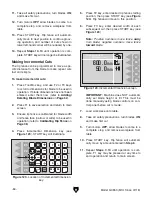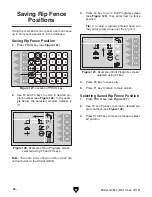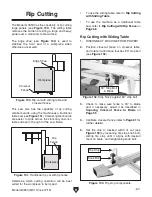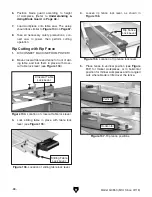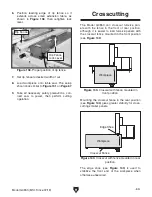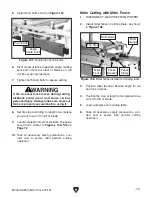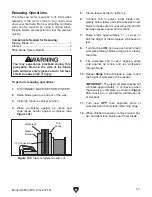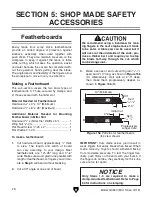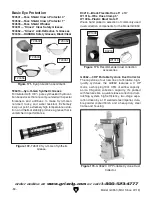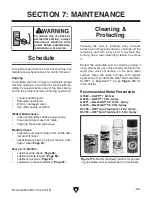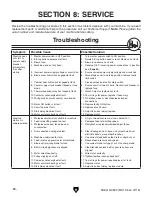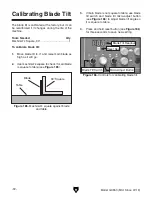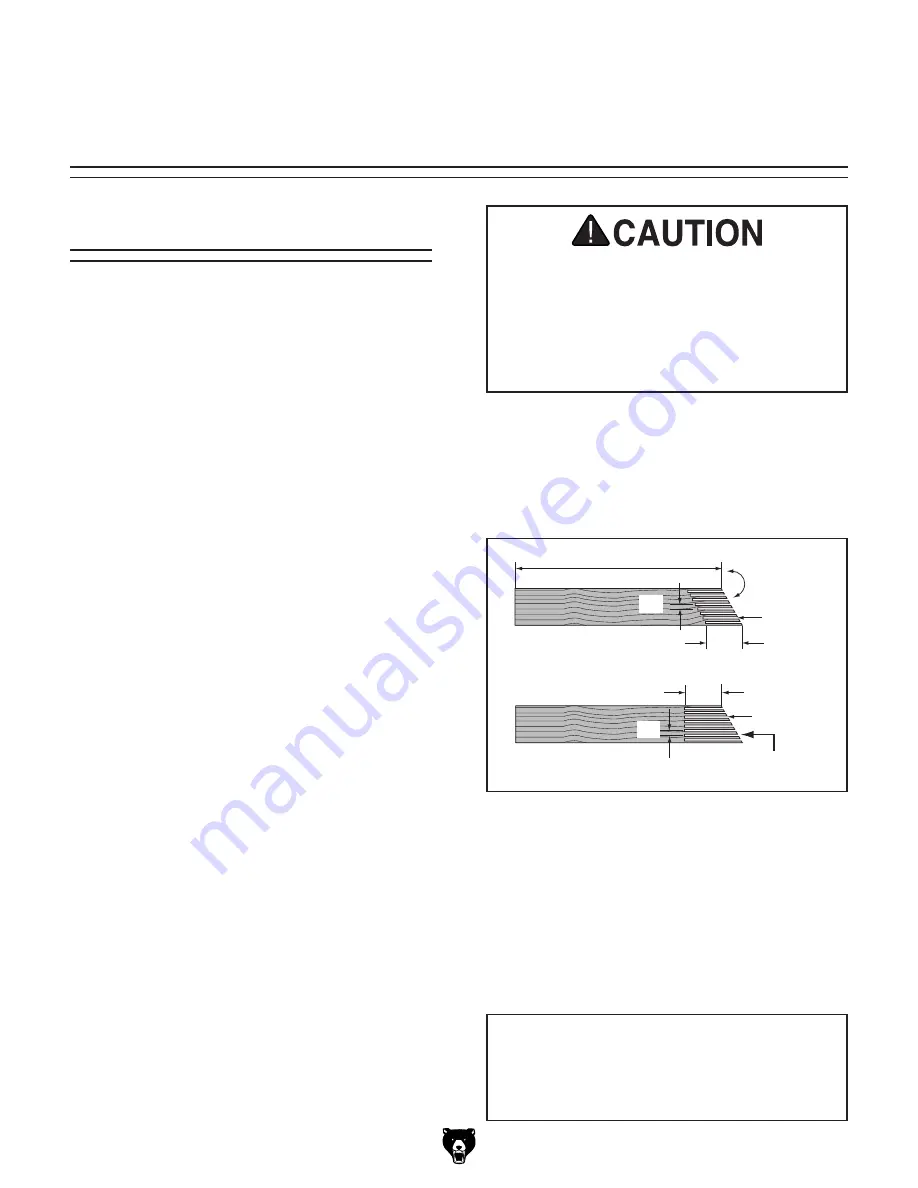
-78-
Model G0853 (Mfd. Since 07/18)
SECTION 5: SHOP MADE SAFETY
ACCESSORIES
Easily made from scrap stock, featherboards
provide an added degree of protection against
kickback, especially when used together with
push sticks. They also maintain pressure on the
workpiece to keep it against the fence or table
while cutting, which makes the operation easier
and safer because the cut can be completed with-
out the operator’s hands getting near the blade.
The angled ends and flexibility of the fingers allow
the workpiece to move in only one direction.
Making a Featherboard
This sub-section covers the two basic types of
featherboards: 1) Those secured by clamps, and
2) those secured with the miter slot.
Material Needed for Featherboard
Hardwood
3
⁄
4
" x 3" x 10" (Minimum)
Hardwood
3
⁄
4
" x 6" x 28" (Maximum) ..................1
Additional Material Needed for Mounting
Featherboard in Miter Slot
Hardwood
3
⁄
8
" x (Miter Slot Width) x 5"L ...........1
Wing Nut
1
/
4
"-20 ..................................................1
Flat Head Screw
1
⁄
4
"-20 x 2" ...............................1
Flat Washer
1
⁄
4
"-20..............................................1
To make a featherboard:
1. Cut hardwood board approximately
3
⁄
4
" thick
to size. The length and width of board
can vary according to your design. Most
featherboards are 10"–28" long and 3"–6"
wide. Make sure wood grain runs parallel with
length of featherboard, so fingers you will cre-
ate in
Step 3 will bend without breaking.
2. Cut a 30º angle at one end of board.
Featherboards
A
B
30°
2"-3"
1
⁄
16
"-
1
⁄
8
"
Kerf
1
⁄
16
"-
1
⁄
8
"
Kerf
2"-3"
10" (Minimum)
Initial Cut
Progressively
Longer Cuts
3
⁄
8
"
3
⁄
8
"
Figure 156. Patterns for featherboards
(top view shown).
3. Make a series of end cuts with grain
3
⁄
8
"–
1
⁄
4
"
apart and 2"–3" long, as shown in
Figure 156
(A). Alternatively, start cuts at 2"-3" deep,
then make them progressively deeper, as
shown in
Figure 156 (B).
IMPORTANT: Cuts made across grain result in
weak fingers that easily break when flexed. When
made correctly, fingers should withstand flexing
from moderate pressure. To test the finger flex-
ibility, push firmly on the ends with your thumb. If
the fingers do not flex, they are likely too thick (the
cuts are too far apart).
NOTICE
Only Steps 1–3 are required to make a
clamp-mounted featherboard. Refer to Page
80 for instructions on clamping.
We recommend using a bandsaw for mak-
ing fingers in the next step because it tends
to be safer. A table saw can be used, but it
will over-cut the underside of the ends, pro-
duce a thicker kerf, and require you to stop
the blade half-way through the cut, which
can be dangerous.
Summary of Contents for G0853
Page 24: ...22 Model G0853 Mfd Since 07 18 5mm Hardware Recognition Chart...
Page 140: ......

